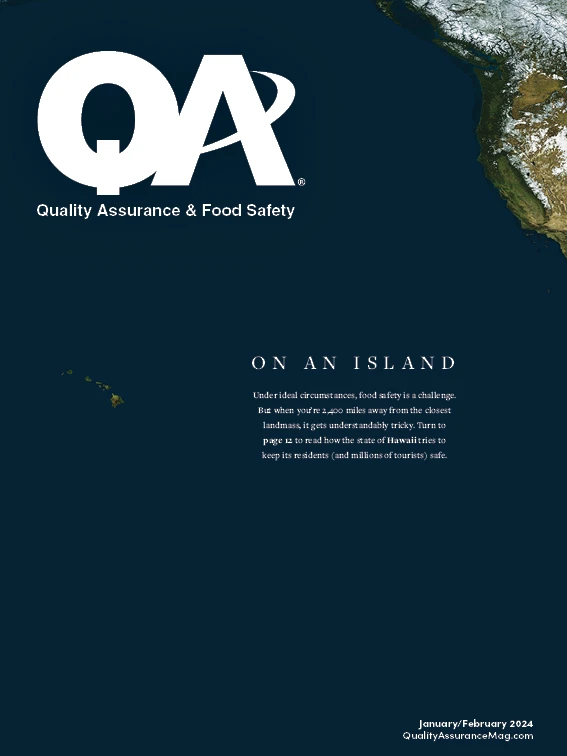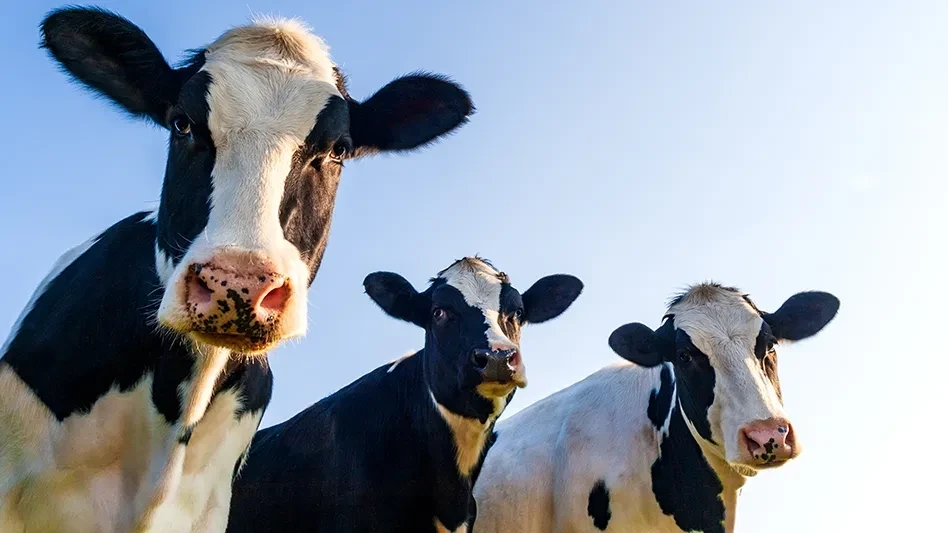
Vdant85 | Adobe Stock
Editor's Note: This article originally appeared in the print edition of QA under the headline "Transparency by Traceability."
The final rule is established. The compliance start date is set. Now, those in the supply chain that manufacture, process, pack or hold certain foods must hunker down and develop systems for collecting, sharing and verifying the accuracy of data — proof of supply chain integrity.
The U.S. Food and Drug Administration (FDA) Food Traceability Final Rule is a key component of its New Era of Smarter Food Safety Blueprint and implements Section 204(d) of the FDA Food Safety Modernization Act (FSMA). It identifies record-keeping requirements for every touchpoint associated with foods on the Food Traceability List (FTL) — a far-reaching catalogue ranging from leafy greens to eggs, ready-to-eat deli salads and crustaceans.
It’s all about transparency in an increasingly global food supply chain.
The unprecedented advance comes at an ideal time, said Bob Gravani, Ph.D., professor emeritus of food science, Cornell University, and past president of the Institute of Food Technologists (IFT). He served as publication task force chair for a paper released last October by IFT and the Council for Agriculture Science and Technology (CAST) examining traceability fundamentals, including technologies to enhance food safety, source identification and consumer confidence.
“Everyone today is very concerned about the quality of food products and where they come from,” Gravani said, calling out key drivers for the new standard: differing traceability regulations coming online across the globe and the potential for expeditious removal of contaminated food from the market to mitigate illnesses.
Not to mention, sustainability and labor concerns ultimately require end-to-end traceability to forward goals to reduce greenhouse gas emissions and ensure ethical workforce policies, said Sara Bratager, senior food safety and traceability scientist at IFT’s Global Food Traceability Center.
“We know that food production is a huge part of greenhouse gas emissions, but you can’t reduce emissions if you don’t know where food was grown, where it went and where it was processed,” she pointed out. “Same with labor rights. You can’t figure out if a supply chain is ethical if you do not know what or where that supply chain is.”
Of course, there’s the consumer confidence piece, too. The final rule offers traceability language as a basis for companies to enhance traceability, therefore elevating brand trust. Specifically, the terms to know are Key Data Elements (KDEs) associated with Critical Tracking Events (CTEs). “The FDA final rule tells us what data to collect and when, but not how it has to be shared,” Bratager said.
Herein lies the challenge that companies have two years to iron out. What have we learned about traceability during the last year that can inform best practices? What elements must we put into play to ensure an accurate, collaborative end-to-end system for keeping records?
Let’s explore.
Testing the Grounds: Learning Tech and Systems Capabilities
The good news: We’re not starting from scratch with traceability systems and technology. Technological progress provides an increasing opportunity to enable traceability, Bratager pointed out.
“The industry has started to make more use of data, and platforms have evolved with that,” she said. “While traceability technology feels new, there are quite a few electronic cloud-based systems that were in place a decade ago, and now there are quite a few more.”
Last summer, the FDA initiated a Low- or No-Cost Tech-Enabled Traceability Challenge to encourage the creation and implementation of traceability solutions that navigate obstacles such as exchanging data through multiple platforms and maintaining consistency.
“We saw that some platforms were pure track-and-trace to figure out how products get from Point A to Point B,” Bratager said. “Some were focused on sales, some on food safety management, others on marketing and consumer engagement.
“As use cases crop up and we explore how to collect, share and draw insights from data, companies will have an easier time using these tech systems. Traceability is much more than tracking and tracing,” she added, pointing to opportunities for technology to provide tangential support and the potential to leverage artificial intelligence (AI), particularly for filtering and analyzing high volumes of data to mine for useful insights.
Even seemingly standard technologies like video conferencing tools that the pandemic pushed into the mainstream can facilitate data sharing and traceability efforts on a global scale.
“You wouldn’t think of Zoom as traceability technology, but the fact that we can use it to talk to people across the globe and get everyone on the same page is in itself a huge support,” Bratager said.
Aside from technology, improved production efficiency and inventory control allow for a clearer picture of how foods travel from farm to table. This will continue advancing. With thorough traceability, companies can decrease spoilage and waste.
Companies must align with supply chain partners and establish systems that communicate seamlessly. “Interoperability is key,” Bratager said. “One size doesn’t necessarily fit all.”
Data and Collaboration: An All-In Approach
As companies establish processes, they must determine what data to gather with the FDA’s final rule as a reference (CTEs and KDEs) — and how to read that data.
How much data is enough? How much data is too much? There’s no hard and fast answer.
“A clearly defined scope and objective is key for a traceability system,” Bratager said. “We have seen traceability programs crumble under the weight of overcommitment. It’s easy to say, ‘We want all 300 data elements, because all of them will provide useful insights,’ but that can overburden the system and cause burnout.”
Her advice: “Design the system so that it meets the needs of data collectors and data consumers so you do not get crushed with data you won’t use. A true systems mentality is so important, thinking about everyone involved and asking, ‘Are we being efficient and reasonable?’”
Another critical factor to consider: every member of a company’s supply chain is in it together. “You can’t just rely on yourself to be compliant,” Bratager said. “You have to rely on others, so communication is the most important thing.”
As for compliance, what’s the cost of not following the regulation?
For now, we’re not sure what enforcement will be in place until after the 2026 deadline. “Investigators are learning, too, and like other regulations in the past, there tends to be some ‘rolling enforcement’ as everyone gets used to the system and implements it,” said Gravani.
“It’s not going to be just the FDA checking to make sure you are following the law,” Bratager added. “It will be your suppliers, customers, auditors and other third parties.”
Fine thresholds are also unknown. “But if you fail an audit and can’t sell to your biggest customer, that can be just as bad as getting slapped with a regulatory fine,” Bratager said.
This adoption period is when companies should be in full-steam systems mode, relying on reputable industry resources for guidance.
“It’s important to look to tried-and-true, scientifically sound organizations like the FDA, IFT, CAST and other industry sector associations for information and training — credibility is the watchword here,” Gravani said, relating that when regulations like this one roll out, there’s a tendency for some groups without the necessary expertise to take advantage of the situation. IFT is introducing an enterprise traceability suite with resources for affected companies.
“We have come a long way with traceability efforts globally and are in a good place in time to move this forward,” Gravani said.

Explore the January/February 2024 Issue
Check out more from this issue and find your next story to read.
Latest from Quality Assurance & Food Safety
- IDFA Presents Leadership Award to Six Federal Officials at Annual Celebration of Dairy Reception
- Seeding The Future Global Food System Challenge is Changing Lives: Winners Reflections
- Raw Farm Products Recalled Following Bird Flu Virus Detections
- FDA Issues 2024 Voluntary National Retail Food Regulatory Program Standards
- GSA Launches Assurances Platform, Prism and Webinar Series in Partnership with Wholechain
- Multistate E. coli Outbreak Linked to Iceberg and Romaine Lettuce Blend
- FDA, USDA Seek Information About Food Date Labeling
- William Marler, Food Safety Advocate and Lawyer, Condemns Lack of Safety of U.S. Food Supply





